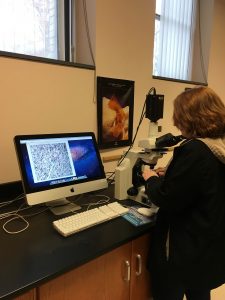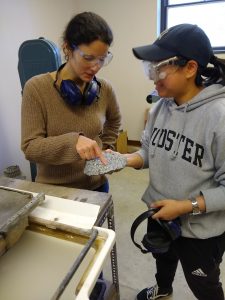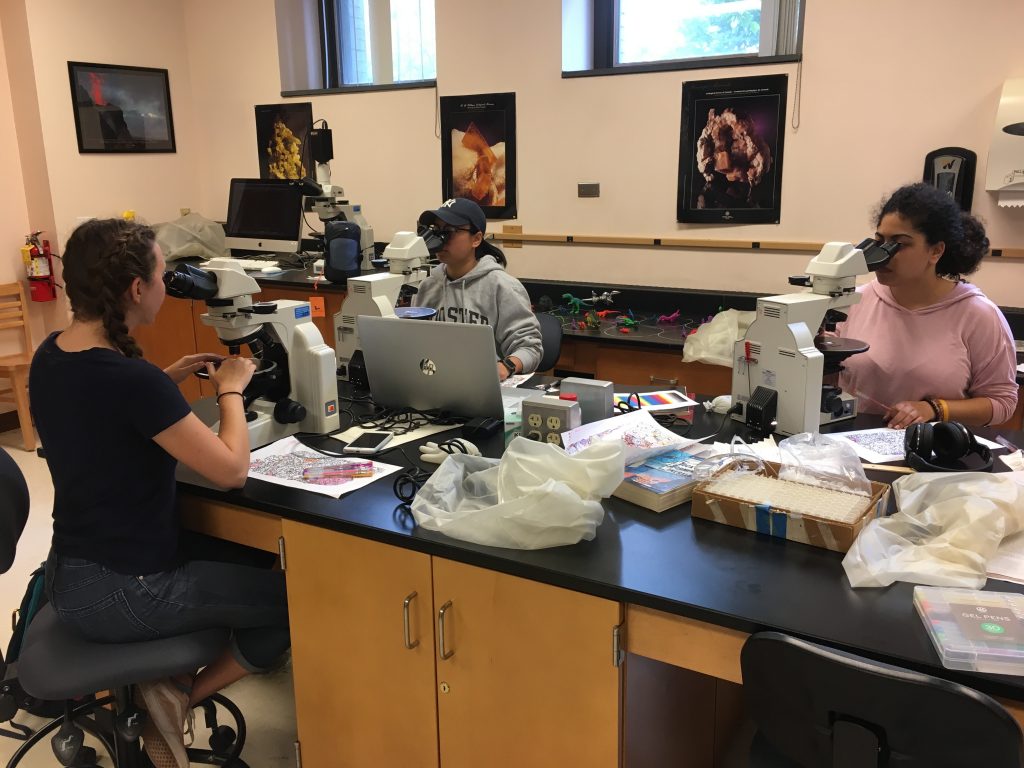Igneous and metamorphic processes govern the rock cycle, from the formation of rocks at mid-ocean ridges, through subduction, collision, and continental rifting. Petrologic concepts help us understand the Earth system and societally relevant issues, like natural hazards and resources. This course uses fundamental physical and chemical concepts to analyze the formation and evolution of igneous and metamorphic rocks. Topics include classification and description, structures, phase diagrams, and thermodynamics. Techniques emphasize optical, petrographic, geochemical methods. Our most recent Petrology course tested a new classification for igneous rocks and presented their results at the AGU professional conference. Petrology combines fundamental concepts of math, chemistry, and physics, so you will notice that we will be applying the ideas and skills that you may have learned in your introductory MATH, CHEM, and PHYS courses. As you know from Earth Materials, igneous and metamorphic rocks are valued for aesthetic reasons, used in creative works of art, and have value in the global economy, so you may see connections between Petrology and courses in ARTH, ARTS, and ECON. You also know that the methods by which we study igneous and metamorphic rocks are applicable across disciplines, especially in ARCH. You will undoubtedly find more connections between Petrology and your experiences here at Wooster.




